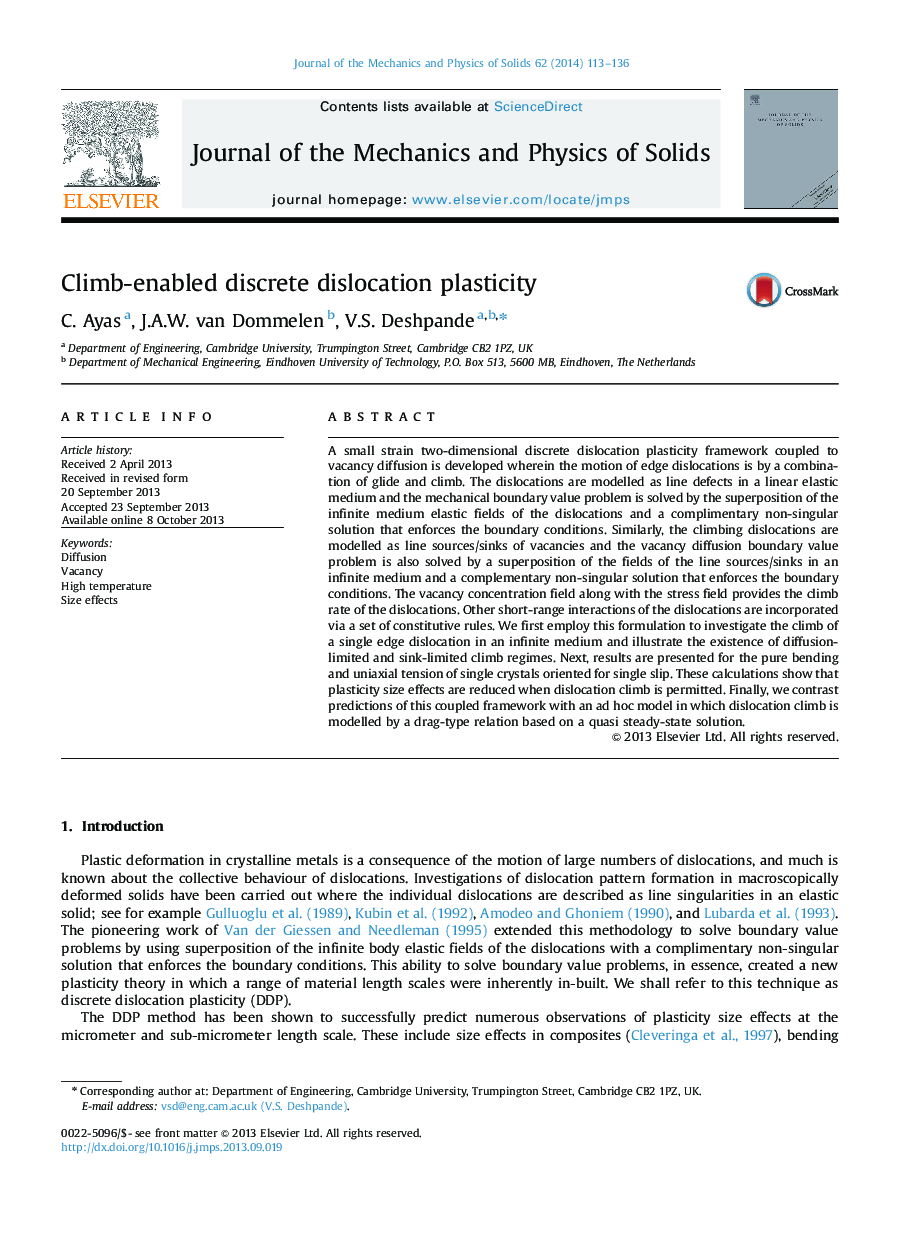| کد مقاله | کد نشریه | سال انتشار | مقاله انگلیسی | نسخه تمام متن |
|---|---|---|---|---|
| 796646 | 1467081 | 2014 | 24 صفحه PDF | دانلود رایگان |
A small strain two-dimensional discrete dislocation plasticity framework coupled to vacancy diffusion is developed wherein the motion of edge dislocations is by a combination of glide and climb. The dislocations are modelled as line defects in a linear elastic medium and the mechanical boundary value problem is solved by the superposition of the infinite medium elastic fields of the dislocations and a complimentary non-singular solution that enforces the boundary conditions. Similarly, the climbing dislocations are modelled as line sources/sinks of vacancies and the vacancy diffusion boundary value problem is also solved by a superposition of the fields of the line sources/sinks in an infinite medium and a complementary non-singular solution that enforces the boundary conditions. The vacancy concentration field along with the stress field provides the climb rate of the dislocations. Other short-range interactions of the dislocations are incorporated via a set of constitutive rules. We first employ this formulation to investigate the climb of a single edge dislocation in an infinite medium and illustrate the existence of diffusion-limited and sink-limited climb regimes. Next, results are presented for the pure bending and uniaxial tension of single crystals oriented for single slip. These calculations show that plasticity size effects are reduced when dislocation climb is permitted. Finally, we contrast predictions of this coupled framework with an ad hoc model in which dislocation climb is modelled by a drag-type relation based on a quasi steady-state solution.
Journal: Journal of the Mechanics and Physics of Solids - Volume 62, January 2014, Pages 113–136
